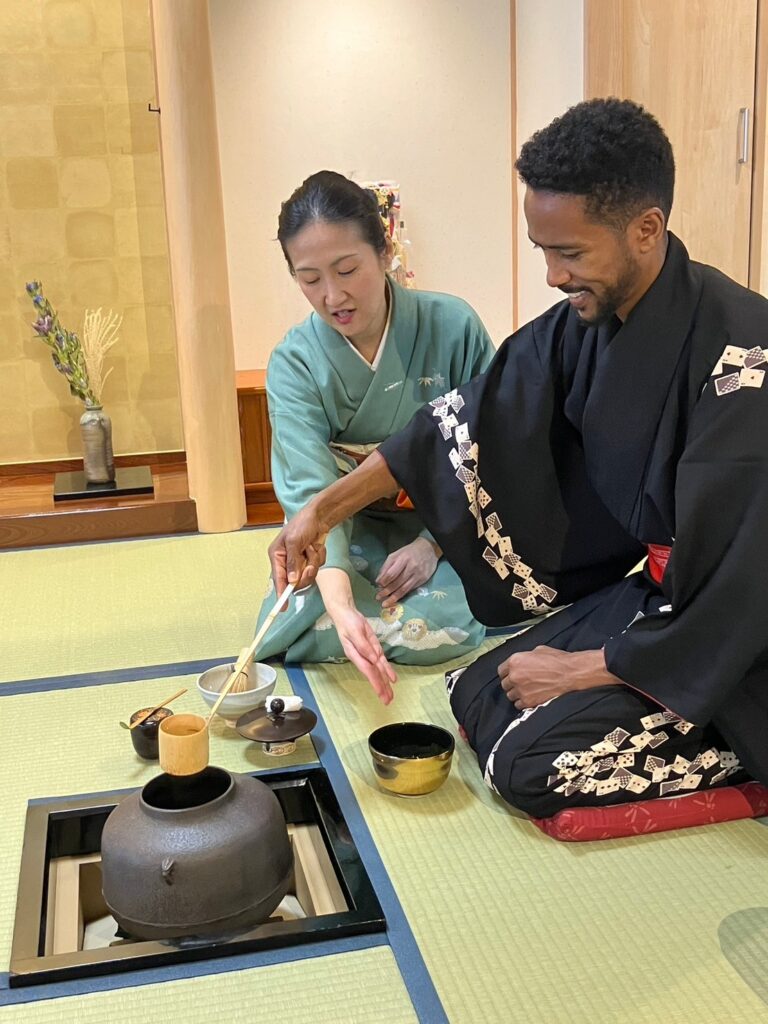They are a family of a couple and five children.
Please come visit Wasako again when you come to Tokyo.
ご夫婦とお子様5名、合計7名で茶道体験をお楽しみいただきました。
また東京に来たら、和茶子-wasako-に遊びに来てくださいね。
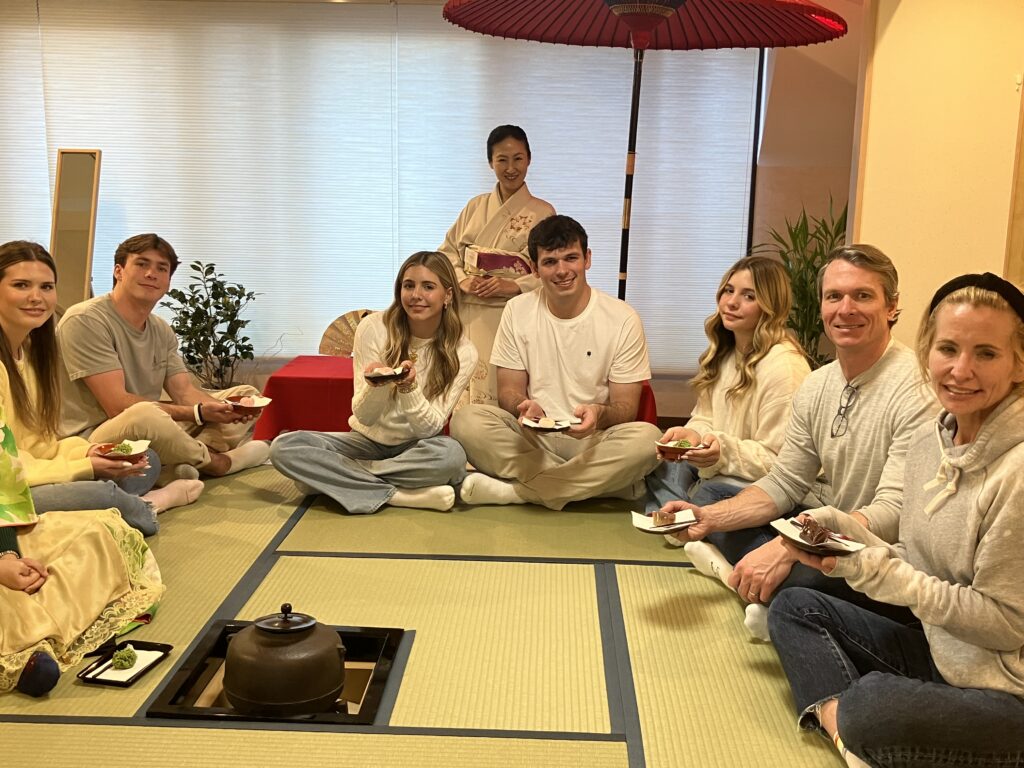
They are a family of a couple and five children.
Please come visit Wasako again when you come to Tokyo.
ご夫婦とお子様5名、合計7名で茶道体験をお楽しみいただきました。
また東京に来たら、和茶子-wasako-に遊びに来てくださいね。

They came from the U.S. and enjoyed the tea ceremony experience.
アメリカからお越しのご家族、茶道体験をお楽しみいただきました。
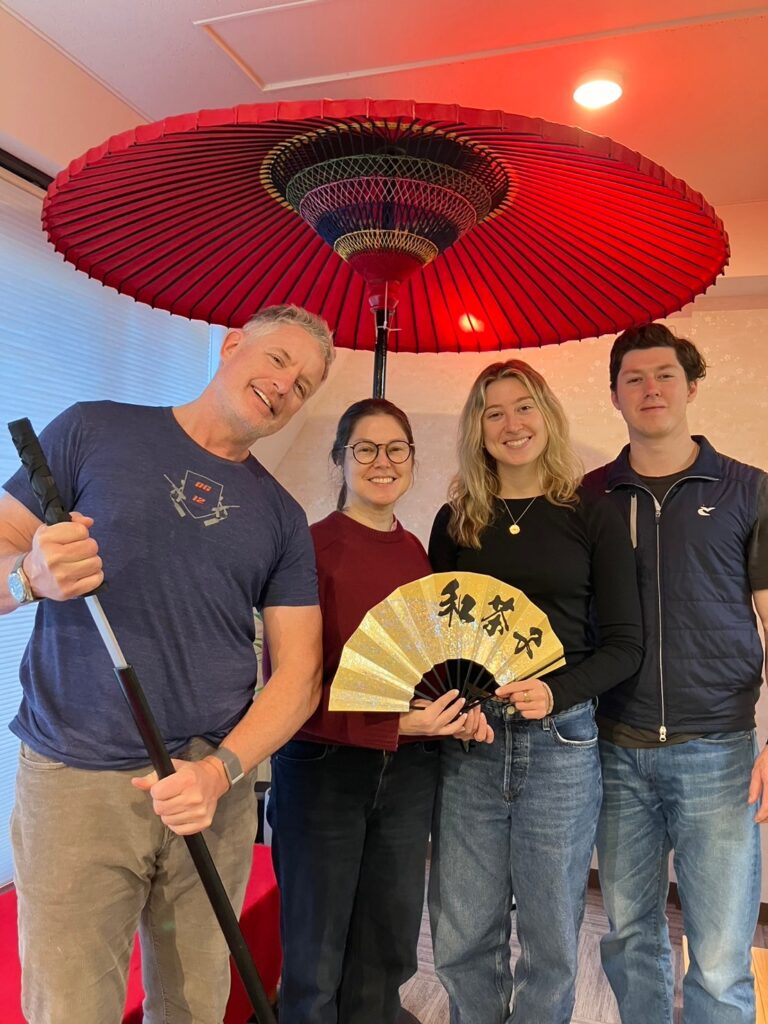
This sweets is designed to look like “snowflakes.”
Ingredients are red beans, tebo beans, sugar, and rice flour.
「雪の結晶」のデザインのお菓子です。
材料は小豆、てぼ豆、砂糖、米粉です。
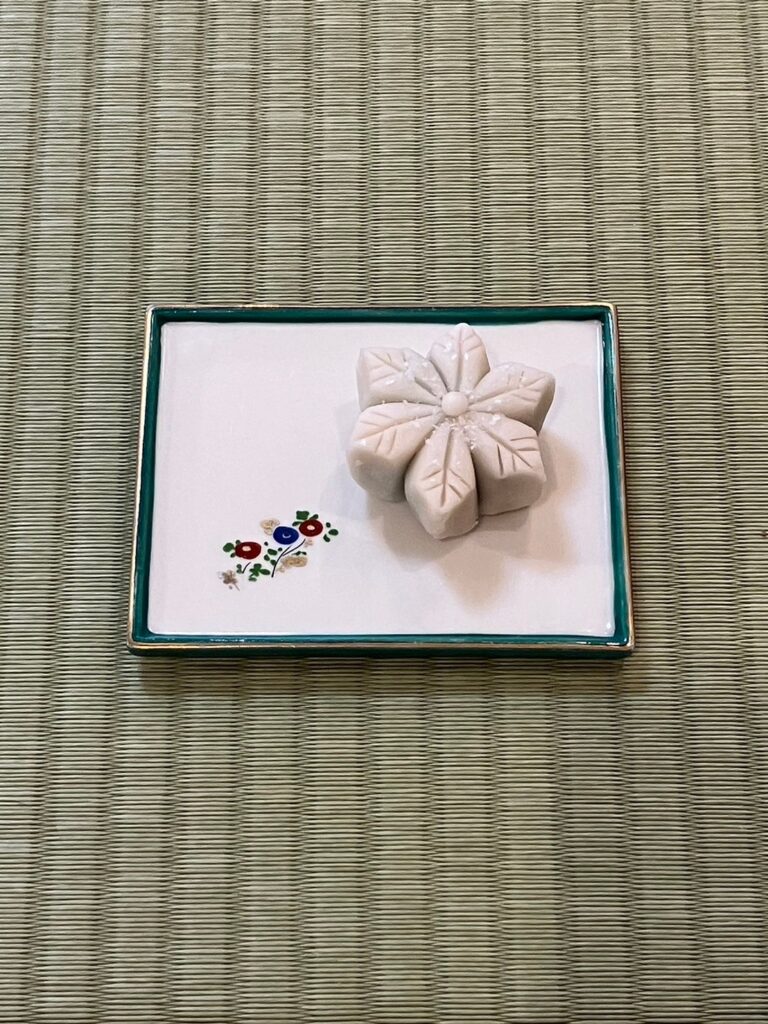
They came from Mexico.
They enjoyed the tea ceremony experience.
メキシコからいらしたご家族、茶道体験をお楽しみいただきました。
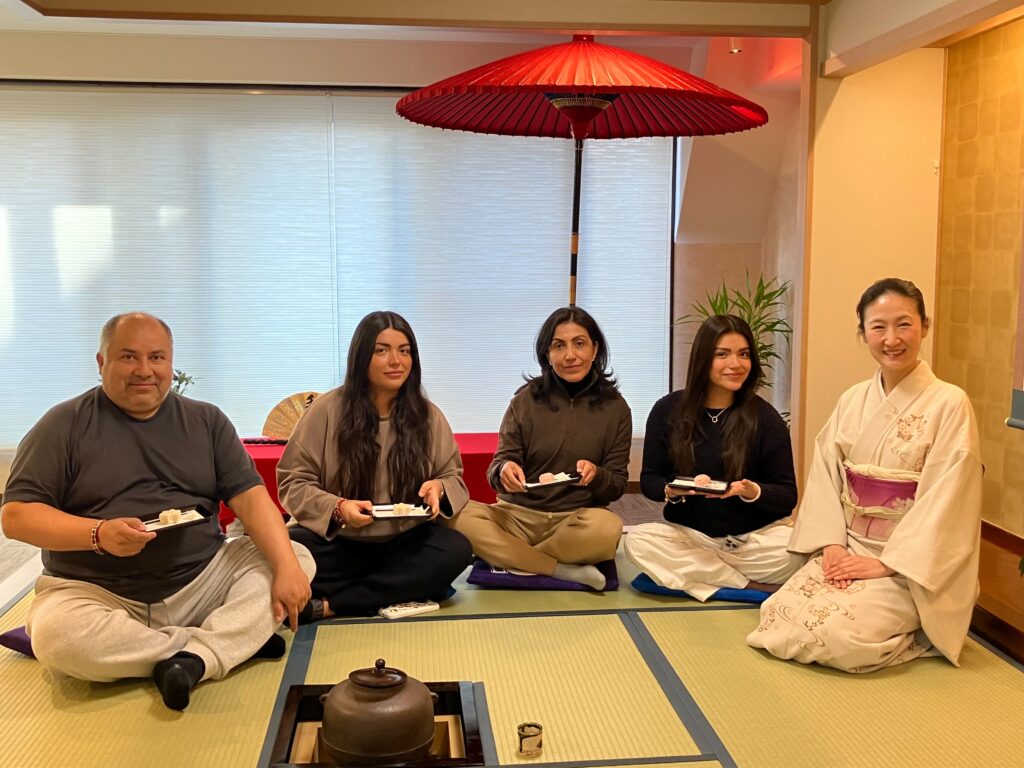
They are a stylish couple from France.
They enjoyed the tea ceremony experience.
フランスからいらしたオシャレなカップル
茶道体験をお楽しみいただきました。
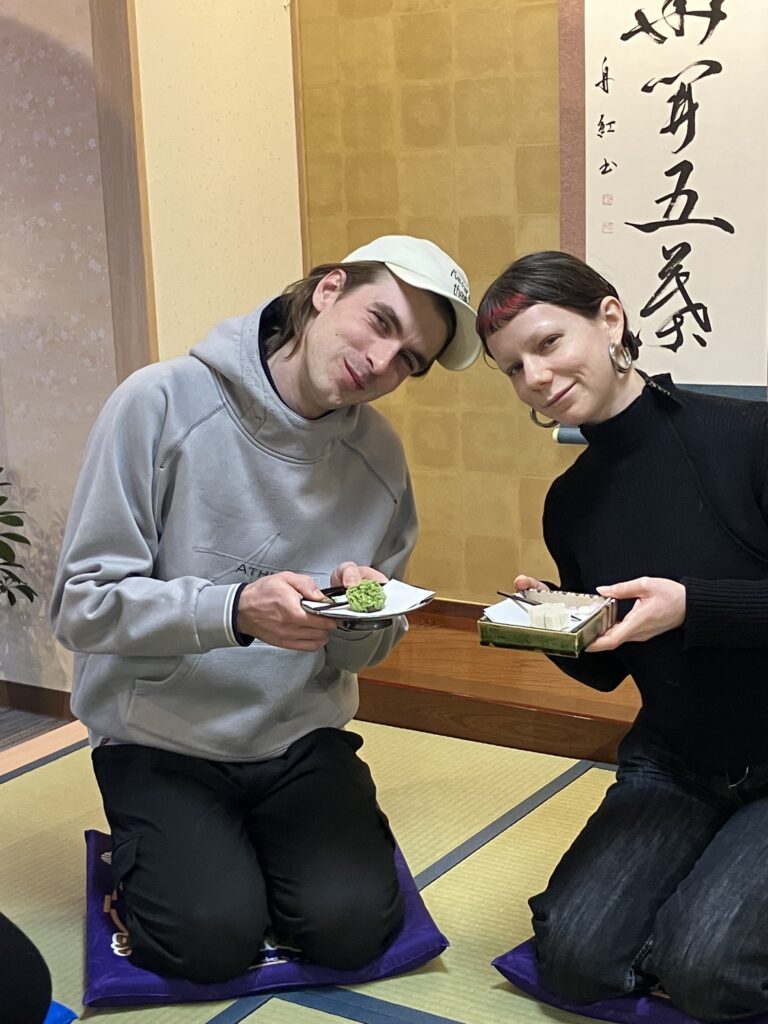
🎵 お正月 🎵
作詞:東くめ
作曲:滝廉太郎
もういくつ寝ると お正月
お正月には 凧(たこ)あげて
こまをまわして 遊びましょう
はやく来い来い お正月
もういくつ寝ると お正月
お正月には まりついて
おいばねついて 遊びましょう
はやく来い来い お正月
童謡「お正月」の歌詞です。
和茶子-wasako-の棗に駒のデザインのものがあり
使うときに、いつもこの歌を思い出しています。
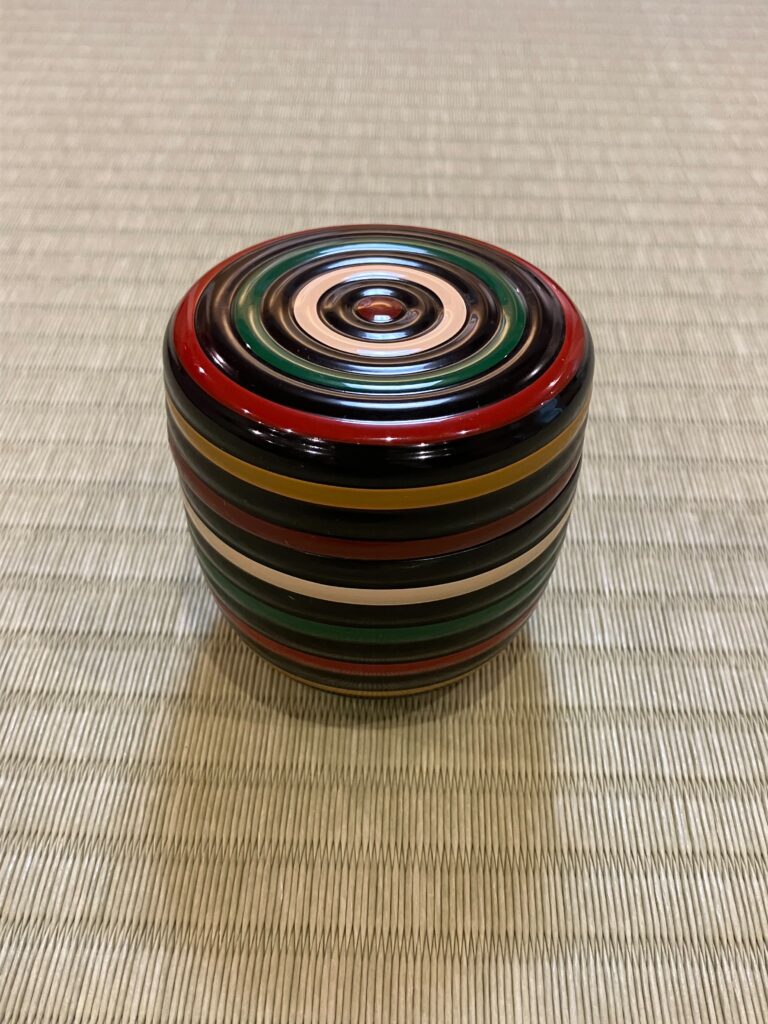
The origins of hatsumode go back to an event called “Toshikomori” that took place before the Heian period.
During this event, people would retreat to shrines dedicated to their local guardian deities or ancestral deities or to their own household altars from New Year’s Eve through New Year’s Day to pray for the health of their families and a good harvest.
It is believed that this custom of staying indoors later developed into the current hatsumode, which is visiting shrines after the New Year.
After the Meiji era, hatsumode became more widespread with the spread of railroads. In particular, in the 1900s, railroad companies began operating “hatsumode trains” and advertising campaigns, which led to an increase in new year visits.
Many people visit Asakusa, and there are long queues to enter Sensoji Temple in particular, so please be sure to dress warmly.
Before or after your first visit to the shrine, we look forward to welcoming you in our warm, Japanese-style room.
初詣の起源は、平安時代以前の「年籠り」と呼ばれる行事にさかのぼります。
この行事では、大晦日から元旦にかけて氏神や祖先神を祀る神社や自宅の神棚に籠もり、家族の健康や豊作を祈りました。
この年籠りの風習が、後に新年を迎えた後に神社を訪れる現在の初詣に発展したとされています。
明治時代以降は、鉄道の普及とともに初詣が広く普及しました。特に、1900年代に鉄道会社鉄道会社が「初詣参り列車」を運行し、広告活動を行ったことで新年の参拝が増えたようです。
浅草にもたくさんの人が訪れ、特に浅草寺には参拝までに行列ができますから防寒対策をしてお越しください。
初詣の前後には、あたたかい和茶子の和室で皆様をお待ちしております。
This tea sweets are made with the image of “camellia that blooms in the cold season”.
Ingredients are tebo beans, sugar, and rice powder.
寒椿をイメージした切餅(せっぺい)です。
材料は、小豆、卵白、寒天、砂糖、米粉です。
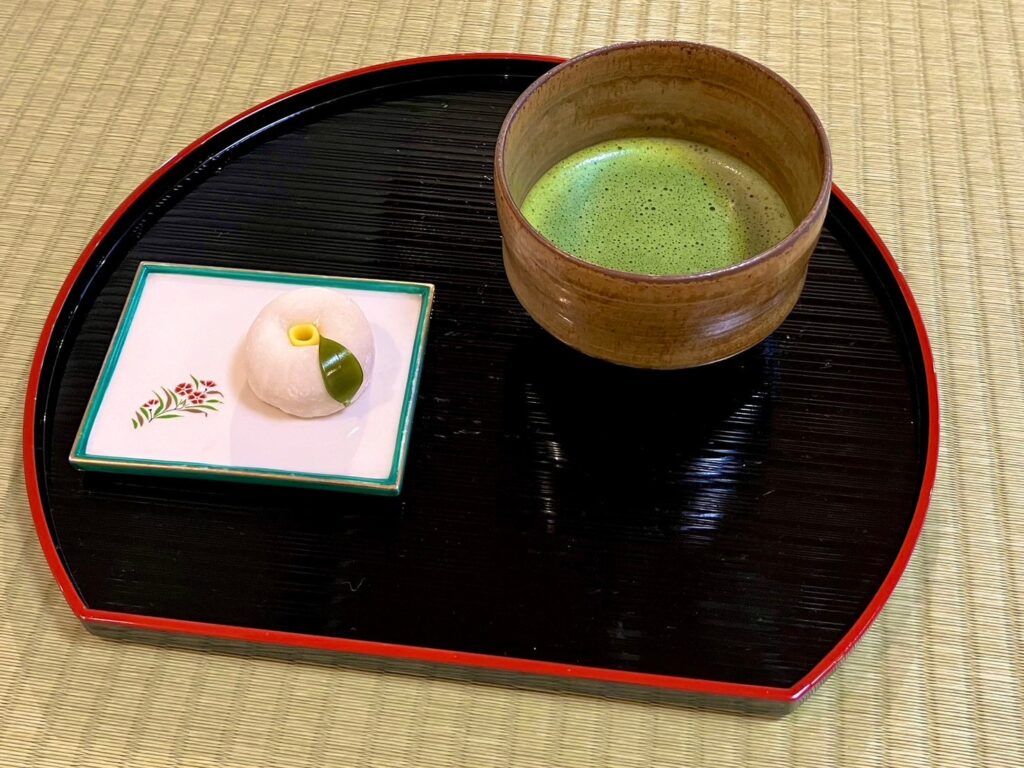
The tool that the man is holding in his hand is known as a “Hisyaku.”
It is to draw water.
男性が手に持っている道具を「柄杓-Hisyaku-」と言います。
湯や水をすくいます。
